Four Studio-Tested Ways to Start Loose, Expressive Paintings
I used to freeze in front of blank canvases until I discovered something that changed everything: use your canvas as your mixing palette first. By the end of a painting session, you have spontaneous strokes and random colors - the perfect expressive beginning.

The blank white canvas is a creativity killer. I learned this the hard way after years of staring at pristine surfaces, paralyzed by the fear of making that first "wrong" mark.
Then I discovered something that changed everything: the best loose paintings don't start on blank canvases at all.
Here are three methods I use in my studio that bypass the precious white surface problem and get you painting expressively from the first brushstroke.
👉 Discover more mixed media painting techniques in my Mixed Media Hub
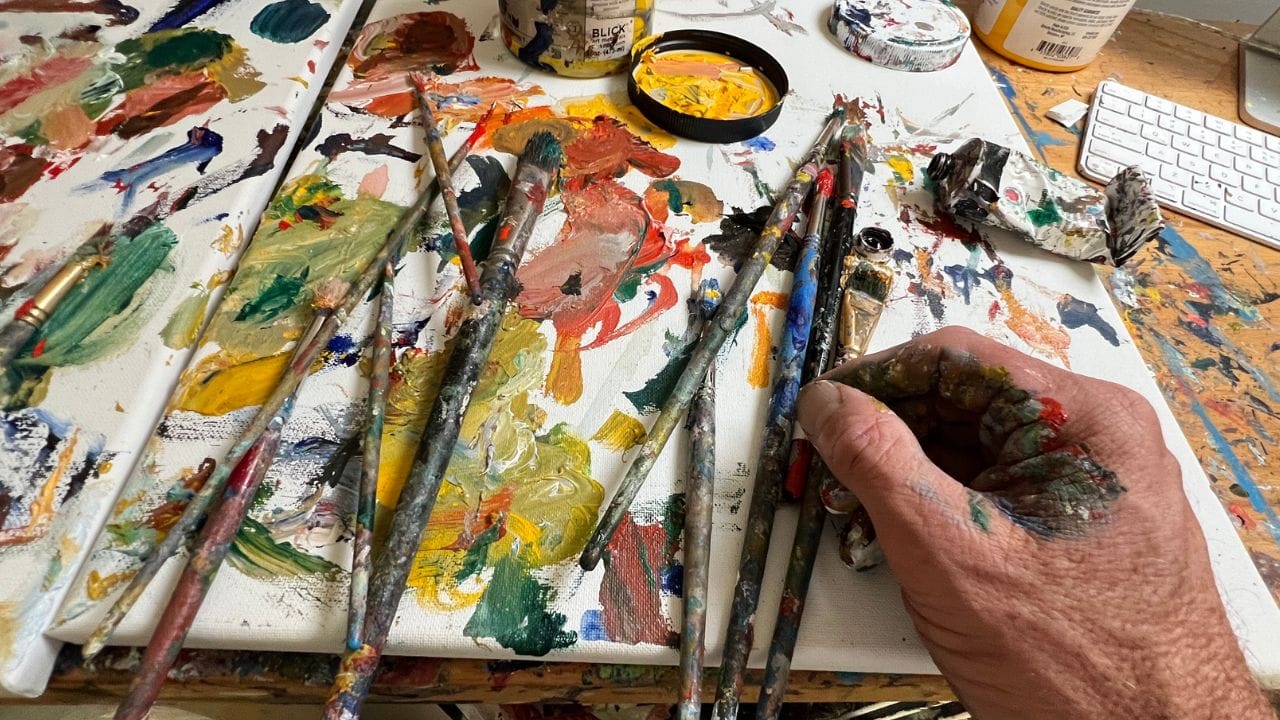
Method 1: Your Canvas Is Your Mixing Palette
Forget traditional palettes. I use my canvas as my mixing area from day one.
Instead of mixing colors on a separate palette, I mix them directly on the canvas surface. By the end of a painting session, you end up with random colors, spontaneous strokes, and unexpected marks already living on your surface. Nothing gets wasted – every bit of paint you mix becomes part of the painting's foundation.
This approach is incredibly resourceful. All your mixed paint gets used instead of thrown away, and you start your next session with an expressive beginning that's already broken the "precious canvas" barrier.
Why this works: You can't be precious about marks that are already there. The random color patches give you unexpected starting points and force you to respond rather than control.
Method 2: Embrace Your Rejects
Your "failed" paintings are actually goldmines for loose work.
When a painting isn't working – and I've learned to recognize this early rather than fighting it – I set it aside. The next day, instead of trying to force the original idea, I flip the canvas upside down or rotate it 90 degrees and start painting something completely different over top.
This reject method has helped me in countless ways. First, it's resourceful – no wasted materials. Second, it removes the pressure of starting "fresh." Third, the underlying marks and colors create unexpected interactions you'd never plan.
Why this works: You're not starting from zero, so there's no blank canvas paralysis. The existing marks push you in new directions and prevent over-planning.
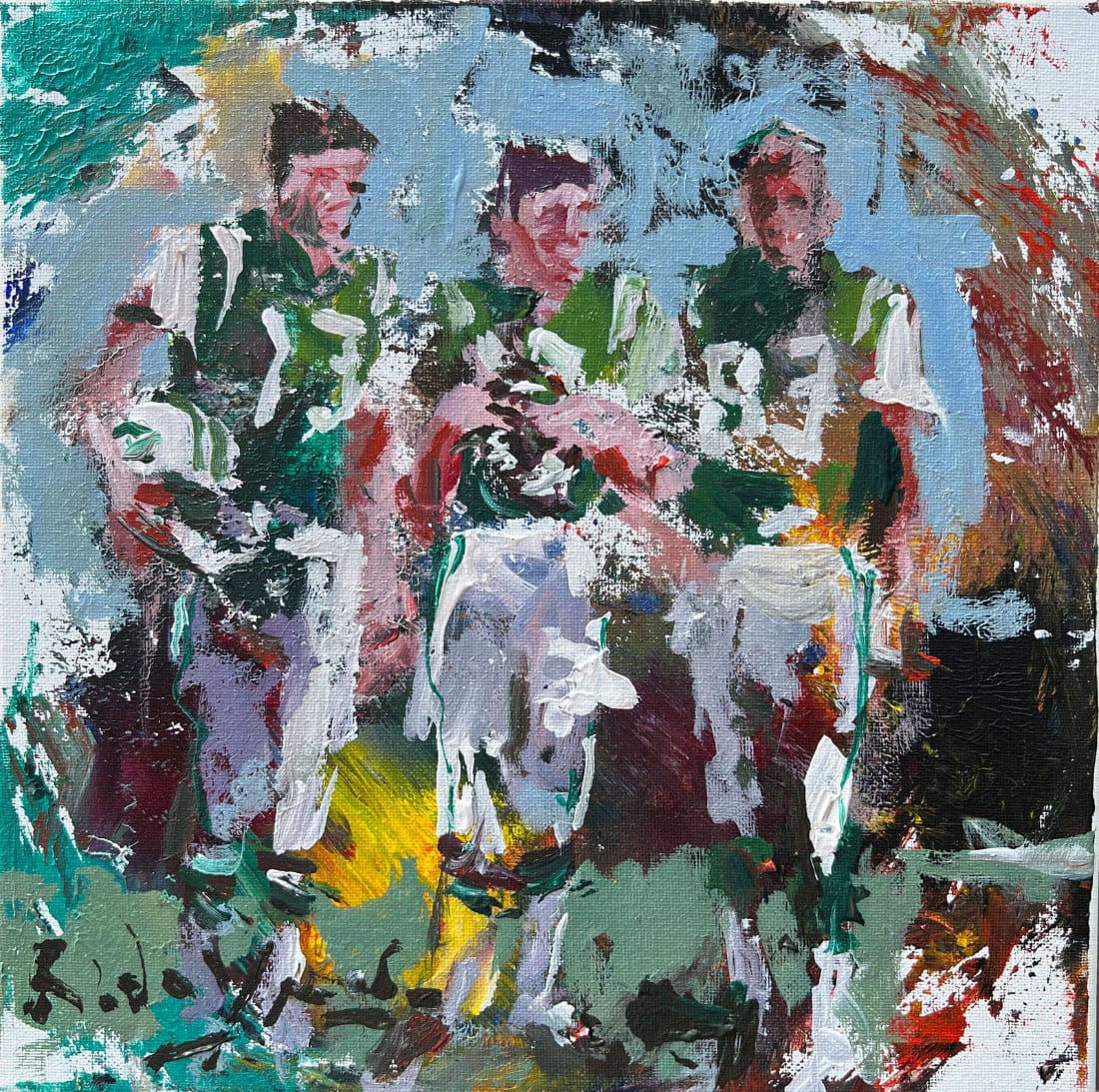
Method 3: The Anti-Precious Canvas Prep
If I must start with a "blank" canvas, I never leave it white.
At the end of each painting session, I take brushes loaded with leftover paint and just smear color onto blank canvases. I don't plan it or choose specific colors – I just want some sort of tone and texture down. Sometimes I'll take two canvases and smash them together with leftover paint between them, creating these wonderful smeared, unpredictable surfaces.
When it's time to paint, I have surfaces with life already in them.
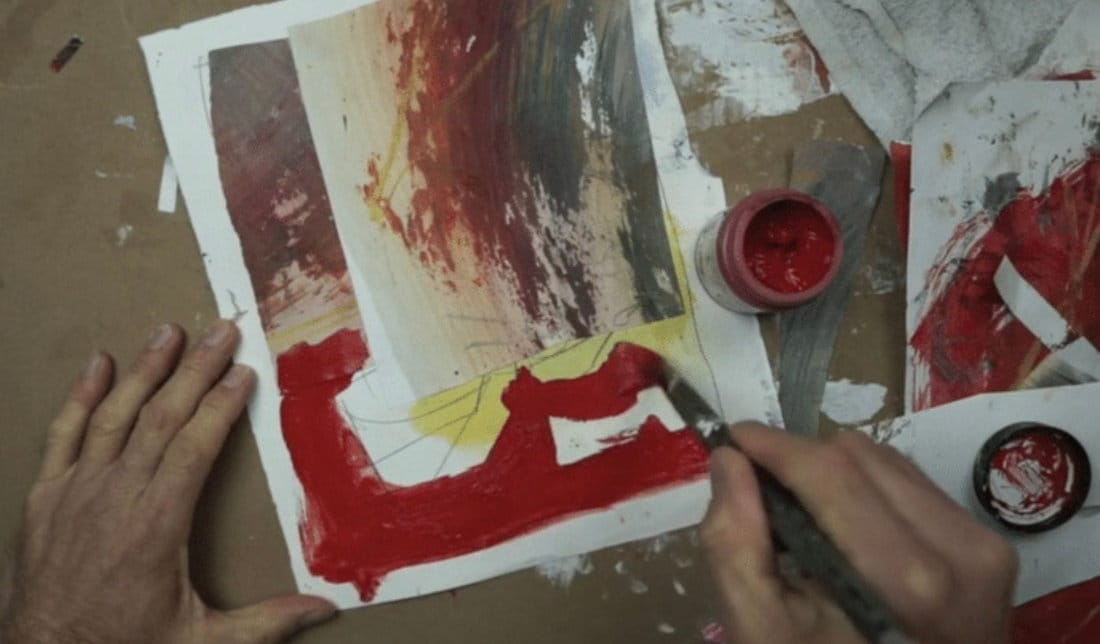
When I Do Draw First
For more traditional subjects, I sometimes start with drawing, but I keep it extremely loose. I focus only on the main point of interest – say, in a cityscape, I might indicate where the key building and a few figures are located.
First, I place the horizon line. I never let it split the canvas in half because that creates boring symmetry. The horizon either favors the lower part (big sky) or upper part (emphasize foreground).
Then I loosely sketch just where my focal area sits. Everything else, I let fall apart. I've found that if my initial drawing is too detailed and tight, that tightness continues through the entire painting. I end up in "coloring book mode" where I'm trying to stay within rigid drawn lines.
By keeping the drawing minimal – just enough to locate my main interest – I maintain the freedom to let everything else be expressive and spontaneous.
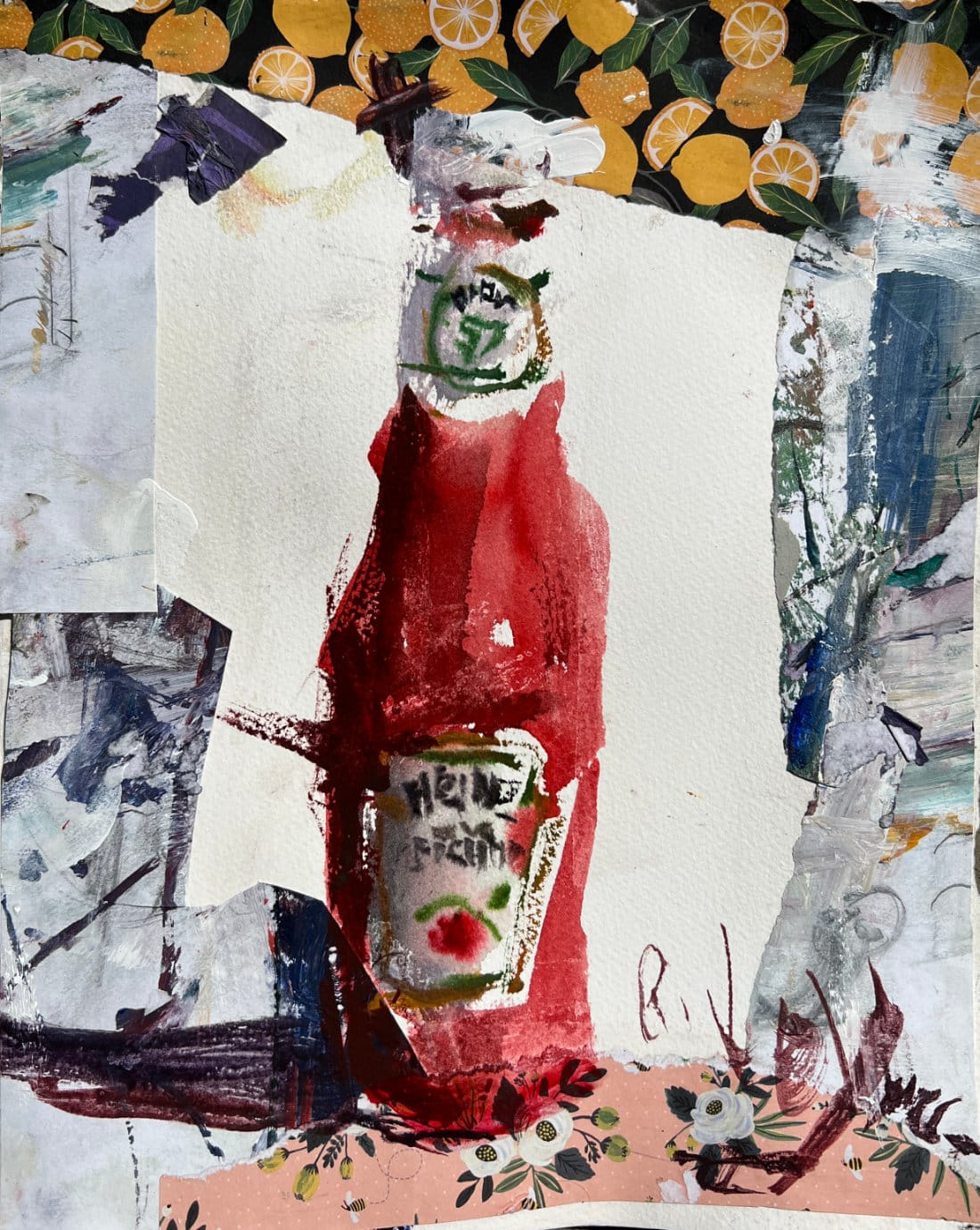
Method 4: The Collage Border Game-Changer
Here's a technique that works with any of the previous methods but creates an entirely different visual and mental experience: adding collage elements before you paint.
Take a reject painting (or one of your palette canvases) and tear 3-inch wide strips of paper – collage paper, handmade paper, even patterned scrapbook paper from craft stores. Don't cut them neatly; tear them by hand so they're jagged, rough, with some areas wider than others.
Go around all four edges of your painting and create a border with these torn strips. The randomness is key – you want that colorful, chaotic pattern around your painting's perimeter.
Variation: Paper Strip Rows Cut (or better yet, tear) paper into thin strips about an inch wide. Layer these in rows across your reject painting. The underlying painting stays visible between the strips, creating this wonderful interplay between what's covered and what shows through.
Why this transforms everything: The collage elements force you to approach the painting completely differently. You're no longer looking at a traditional rectangular painting space – you have borders, interruptions, texture variations that demand a different response.
Visually and mentally, you have to work with these elements instead of around them. The paper strips become part of the composition, not just surface preparation. You end up painting into, over, and around the collage in ways you'd never plan.
This method combines the best of using rejects with the unpredictability of mixed media. The torn paper edges, random patterns, and underlying paint layers create starting points that are impossible to control – which means you stay loose and responsive throughout the entire painting process.
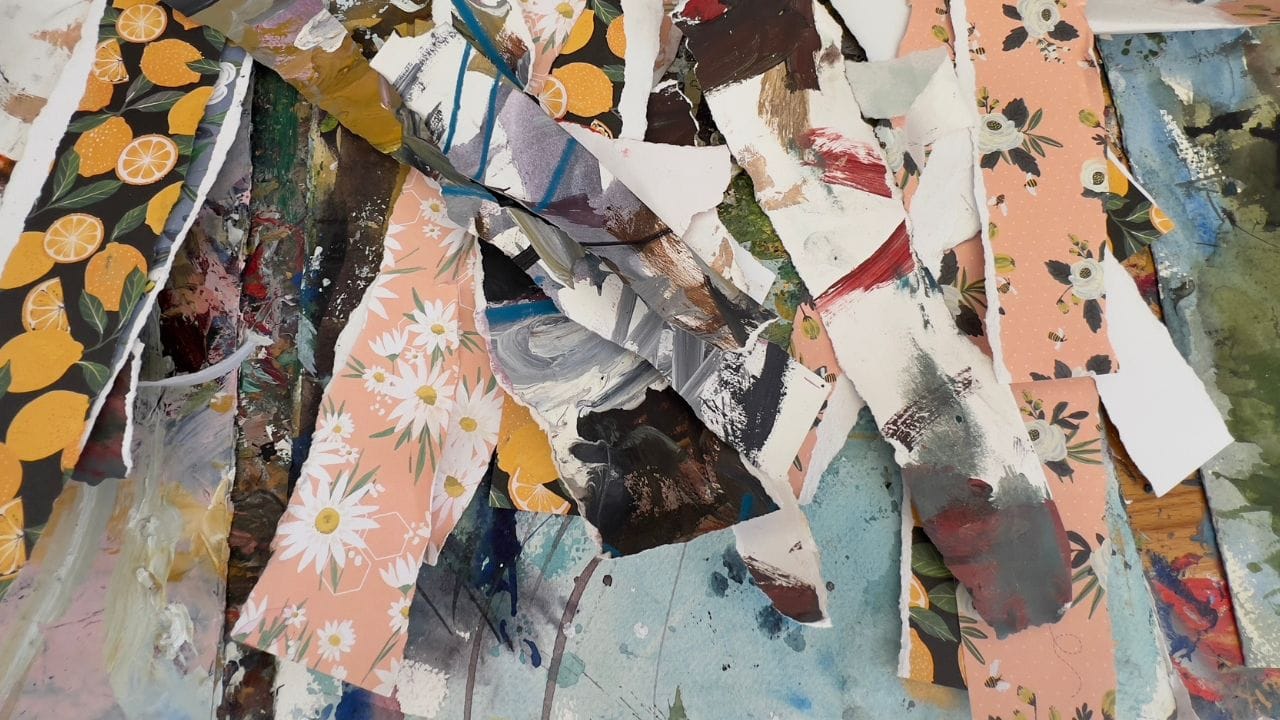
The Real Secret
All four methods solve the same fundamental problem: they prevent you from being precious about your marks. Once there's something already happening on the surface, you shift from "What should I paint?" to "How do I respond to what's here?"
That shift changes everything. Instead of executing a predetermined plan, you're having a conversation with the painting. And conversations are always more interesting than monologues.
Start Messy, Stay Loose
The next time you want to paint expressively, try one of these approaches. Use your canvas as a mixing palette, flip an old reject upside down, or prep a surface with random color smears.
The goal isn't to make pretty beginnings – it's to make beginnings that won't let you tighten up. Because loose, expressive painting doesn't come from perfect planning. It comes from honest response to what's actually happening on your canvas.
Which method sounds most appealing to you? Sometimes the best way to start painting loosely is to stop starting "properly."
Want to go deeper with collage & mixed media?
👉 Explore the Mixed Media Hub
👉 Browse Collage Painting Ideas
👉 Dive into the Garage Collage Barrage




